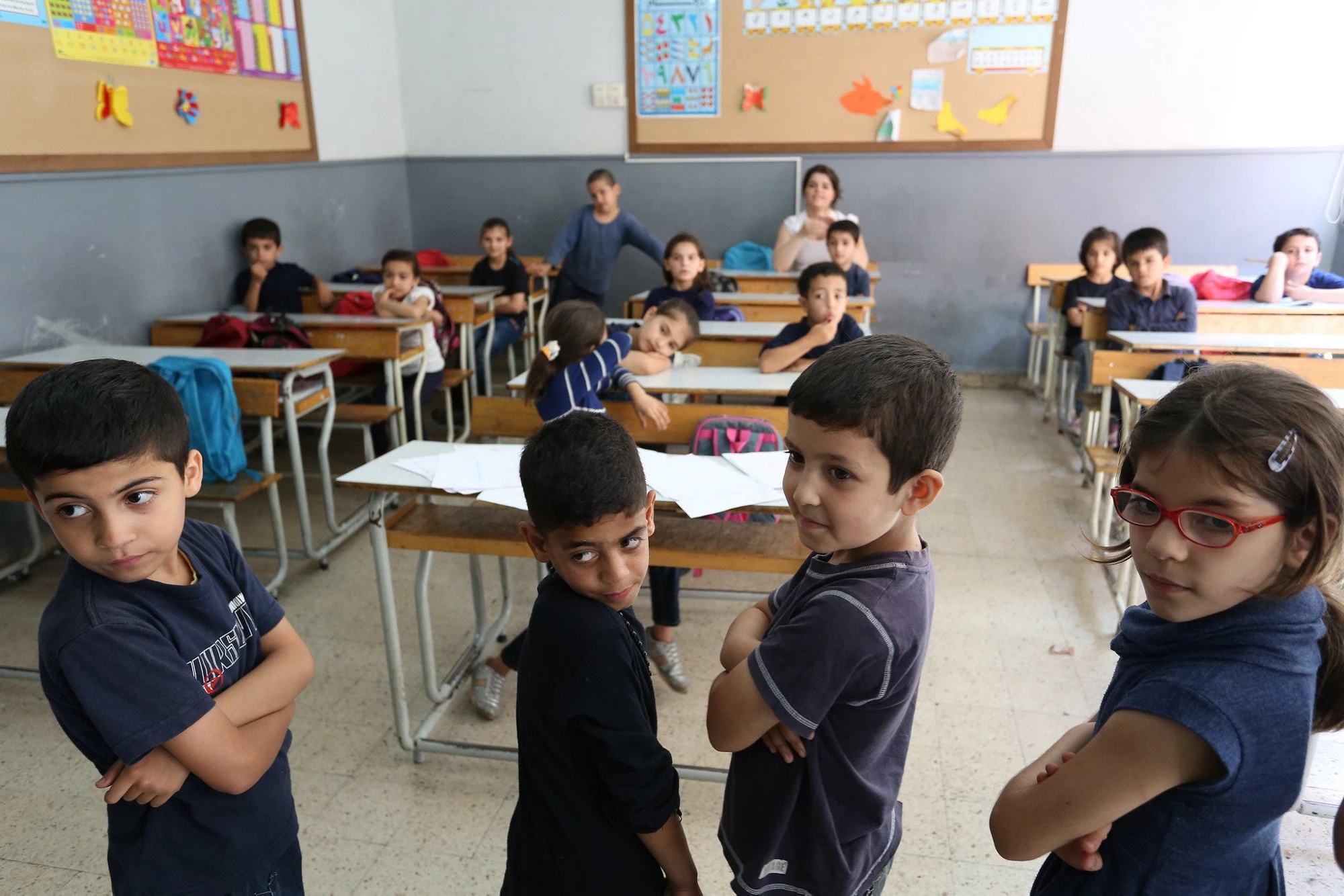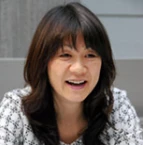 Syrian refugee students listen to their school teacher during math classes at a public school in Beirut, Lebanon
Syrian refugee students listen to their school teacher during math classes at a public school in Beirut, Lebanon
“I am illiterate. I think I was cheated when we escaped from Syria to Lebanon because I could not read or write. We had to pay a lot of money to come here.” Khalid, the father of a Syrian family whom I met at a refugee shelter in Zgharta, Lebanon, said to me. “I want all my children to have education so that they can defend themselves and will not be cheated in their lives.” Khalid and his wife Amal have four sons and one daughter, and recently lost a baby at birth. Hugging his daughter tightly Khalid said that he wants her to get good education. Khalid and Amal did not need any nudging to send their children to school in their new home, they knew better the value of learning for their sons and daughter. And thankfully, they are all able to go to a local school as the government of Lebanon opened the second shift in the school for refugee children.
Globally 70.8 million people were facing forced displacement due to conflict, violence, persecution or human rights violations at the end of 2018. This is a record number, over 60% increase in one decade since 2009. Almost 4 out of 5 refugees are in prolonged distress situations, and 5.8 million refugees have been displaced for 20 years or more. This means a substantial proportion of refugee children will be in host communities for the entirety of their schooling years.
Sadly, and perhaps not surprisingly, very few refugee children have access to the full cycle of education from pre-primary to secondary education. There are 7.1 million school-age refugee children around the world, and 3.7 million - more than half - don’t have the opportunity to go to school. It gets progressively more difficult to access school as refugee children get older. Only 63% of refugee children are enrolled in primary school, compared to 91% globally. Only 24% of refugee adolescents are enrolled in secondary schools, compared to 84% globally. And only 3% of refugee youth have access to higher education, compared to 37% globally. Girls and young women are disproportionately affected.
Historically education for refugees has been provided – if provided – through parallel systems to the education system of the host country. These have usually been conceived as temporary, often delivered in refugee camps, with the implicit assumption that refugees will be able to return home in a short period of time. These “emergency” education services were often able to quickly fill the needs. However, parallel systems usually did not provide refugee children with the pathway into formal education in host countries. We now know that inclusion in the local education system is the most effective way to ensure refugee children and youth go to school, gain certification, complete all cycles of education and have a fair chance to access higher education whether in host, or their own countries.
Integration of refugee education in the local system makes technical sense and responds to humanitarian and developmental appeals. However, it is often difficult to implement it because of various political, social, economic, logistical or practical reasons. Almost 90% of displaced persons are in developing countries where education systems are often already weak and struggling to provide quality learning opportunities for their citizens. Even within developing countries, refugees often live in areas that are particularly poor or vulnerable and where provision of education is most limited.
Khalid and Amal live in Zgharta, one of the poorest districts of Lebanon. Coping with an inflow of refugees into the education system puts significant pressures on those systems. Politicians and policy makers are often in a tight spot, with dissatisfaction from their own citizens about the quality of existing services. However, there are some promising examples of education for refugees. For example, Cameroun is addressing challenges for refugees in a holistic manner combining health, social protection and education interventions such as cash transfer for birth registration, nutrition and pre-school while strengthening the capacity of government to provide equitable access to quality education. Jordan has put significant effort in improving access, quality, accountability and innovation in early childhood development, basic and secondary education for both Jordanians and refugees.
Supporting refugee education requires coordinated and sustained backing from all concerned – parents, teachers, host communities and governments, NGOs, UN agencies, foundations, development partners, and the private sector. The onus should not be only on the refugee families, local communities and host governments. The international community needs to step up – and the commitments made under IDA19 Refugee Sub-Window promise to bring more resources to help host governments build inclusive education systems, addressing the needs of both refugees and host communities. The World Bank’s Middle East and North Africa Human Capital Plan puts a special emphasis on the importance of protecting human capital in conflict-affected and fragile states and for refugees. The Bank is currently providing USD 5.65 billion for education in fragile settings and refugee hosting countries and is preparing an additional USD 2.6 billion in operations over the next year.
As the international community we all agree that access to quality education is a basic human right for each and every child regardless of where he or she lives or comes from. Quality education is also critical for social cohesion, peace-building and stability. To underscore just how critical the need for quality education is, the World Bank announced a new Learning Poverty indicator – defined as the share of 10- year-old children who cannot read and understand a simple story – and set a global target to reduce this number – currently 53% -- by half by 2030. While data on learning outcomes for refugees is limited, many refugee children may be facing learning poverty. We will continue to work with governments and all partners to ensure access to and quality of education improves for all children – including those displaced from their home countries. Education is a gateway to knowledge, skills development and jobs. Refugees need accelerated and simple pathways to integrate into new communities and education plays a vital role in this process.
My hope is that when I go back to Zgharta in Lebanon, say in 3 years, I will hear that Khalid, Amal and their children safely went back home in Syria. But if they were still to be in Zgharta, I hope all their children are still in school, learning critical skills to thrive in their communities and beyond.


Join the Conversation